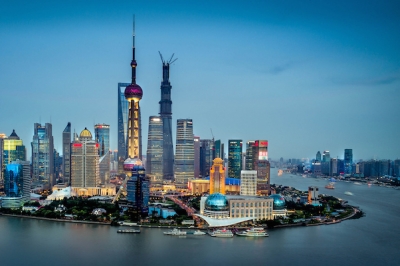The China Maritime Safety Administration (MSA) has issued updated Guidelines on Implementation and Supervision of Ship Emission Control Areas (ECAs) that detail how compliance with emission control measures will be verified in the Chinese ECAs.
The new regulations designating three areas as sulphur control areas will become effective on January 1st 2019. Eleven key ports are allowed to impose requirements for fuel burned at berth as early as January 1st 2016 – four will do so from April 1st. Mandatory port requirements will go into force January 1st 2017.
On December 4th 2015, the Chinese Ministry of Transportation published new regulations designating parts of its coastal waters as emission control areas (ECA). Due to the growing recognition of how shipping contributes to air pollution along the coast, ships, including ocean-going vessels, which operate in areas near the Pearl River Delta, Yangtze River Delta and the Bohai Sea will be obliged to use fuel containing less than 0.5% sulphur from January 1st 2019.
Eleven key ports within the designated areas are allowed to apply the same requirement to ships at berth as of January 1st 2016. These eleven ports are Guangzhou, Shenzhen, Zhujiang, Shanghai, Ningbo-Zhoushan, Suzhou, Nantong, Tianjin, Qinhuangdao, Tangshan and Huanghua. Recently it was announced that the ports in Shanghai, Nongbo-Zhoushan, Suzhou and Nantong will be applying the requirement from April 1st 2016.
From January 1st 2017, the requirement will become mandatory for all eleven key ports within the designated areas. From January 1st 2018, it will be extended to cover all remaining ports in the sea areas.
At the end of 2019, the Chinese government will assess the situation and consider whether it is necessary to reduce the sulphur limit in the sea areas and ports to 0.1%. It is our understanding that this decision will take into account the supply capabilities of the Chinese refinery industry and bunker providers.
It should be noted that despite the use of “ECA” with regard to this regulation, it is not linked to MARPOL’s ECA requirements; it is strictly a Chinese regulation. The practical implication of this is that the International Maritime Organization’s ECA regulation provides no formal guidance as to how the Chinese authorities will implement and enforce the requirements.
Information received so far indicates that alternative abatement methods, such as exhaust gas cleaning systems and shore power, will be accepted as compliance methods.
The Hong Kong guidelines regarding the use of 0.5% fuel at berth so far remain unaffected by this regulation.
Given that key ports could implement the requirement already on January 1st 2016, we recommend clarifying port requirements with the agent or port authorities in due time before arrival. In the longer term, we also recommend revising the company bunkering strategy to assess the impact of the new requirements
Source: DNV GL




























































